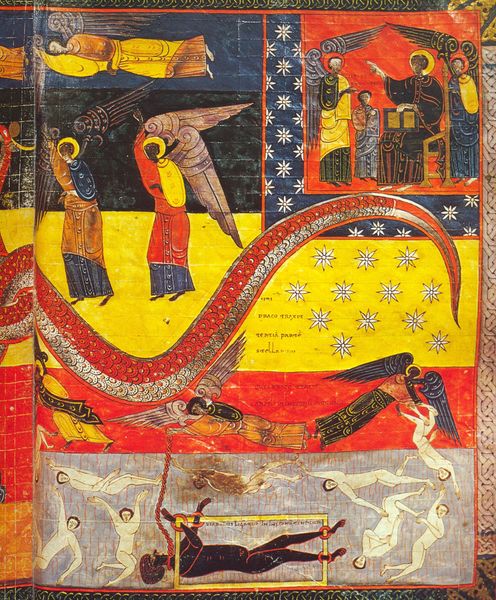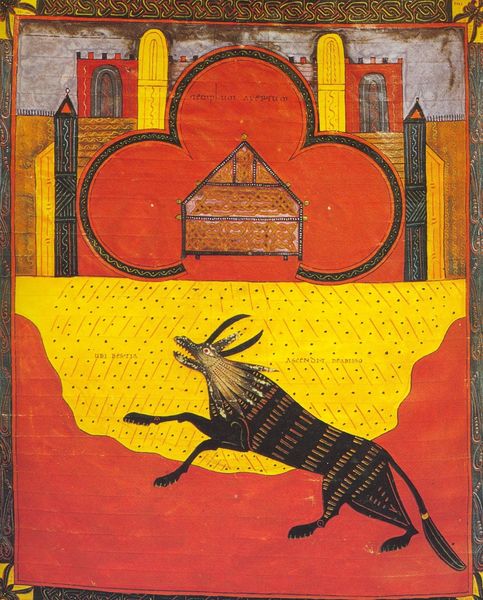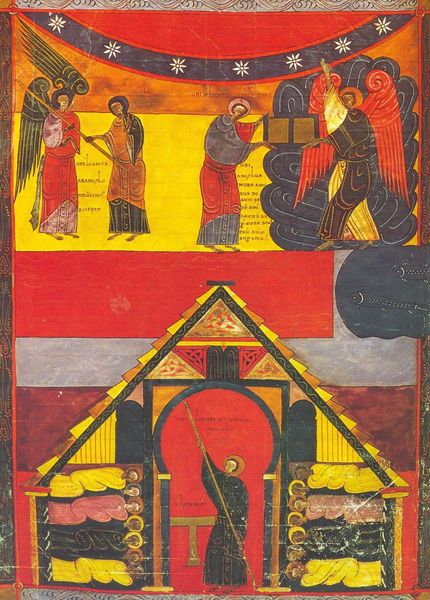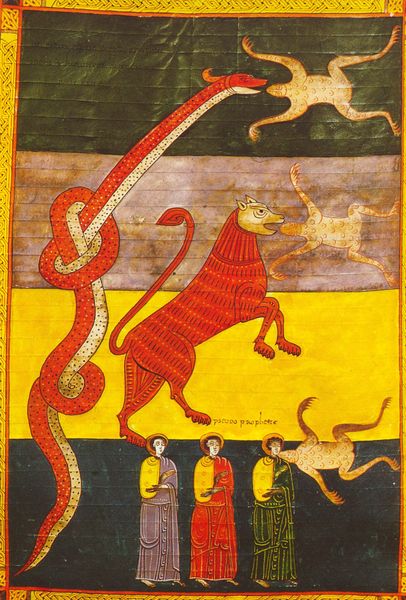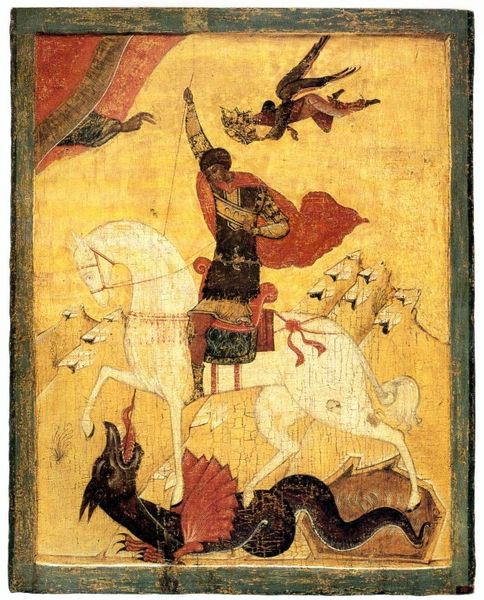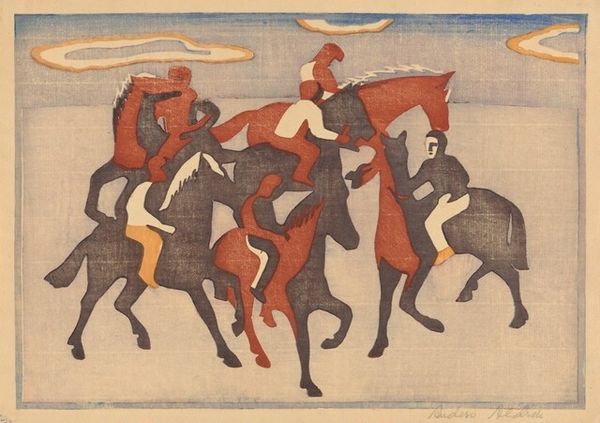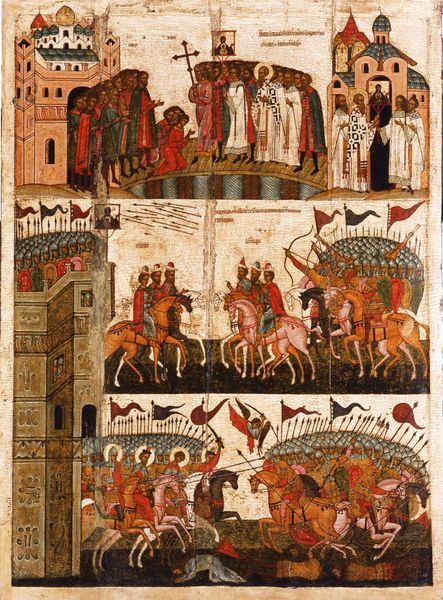
tempera
medieval
allegory
narrative-art
tempera
figuration
romanesque
oil painting
miniature
Copyright: Public domain
Curator: Here we have a fascinating Romanesque tempera artwork: "Les quatre Cavaliers. Apoc. VI," attributed to Facundus. Immediately, the starkness of the palette grabs my attention; ochres, reds, blacks dominate. The figures are flattened, stylized... it feels deliberately removed from naturalism. Editor: The impact is immediate and powerful. The arrangement, so neatly tiered and filled with figures from end to end, creates a symbolic language of impending doom and perhaps judgement. Are those really hearts painted on the horses? Curator: Indeed. I think a close analysis of the Romanesque-era use of tempera reveals some details. See the layering of pigments and those minute, repetitive brushstrokes that construct forms? Facundus probably would have prepared his own gesso panels from animal glue, carefully layering pigment sourced locally and combined with egg yolk to achieve a lasting image for his medieval audience. Editor: Those flat, patterned surfaces become incredibly potent. I wonder what that archer at the very top might mean for Facundus' patrons at the time. Are we to understand he's Pestilence riding out ahead of Death with his sword ready? Are we meant to see any salvation through this chaos, or just raw devastation? Curator: And note that Facundus seemingly has chosen materials and techniques to convey both divine significance and earthly power. We need to examine what this type of art-making entailed at this moment in the history of Romanesque Iberia and unpack its social impact for Christian patrons. Editor: The repetition certainly reinforces certain feelings over others. Seeing those winged figures watching above is almost unnerving, but it gives so much additional symbolic depth to their status that has me eager to research how the medieval world might see that in its religious, historic, or intellectual circumstances. The whole tempera miniature breathes that feeling out onto you. Curator: The interplay between materiality, making, and meaning is powerful here; thank you for pointing out its potency through iconography! Considering that art production in medieval monasteries was, itself, part of daily liturgical acts allows us a special type of glimpse into an entirely different cultural moment and its understanding. Editor: Understanding symbols is, after all, about contextualizing a particular worldview—exactly what makes this Romanesque piece and its art making of immense interest for historical investigation.
Comments
No comments
Be the first to comment and join the conversation on the ultimate creative platform.

